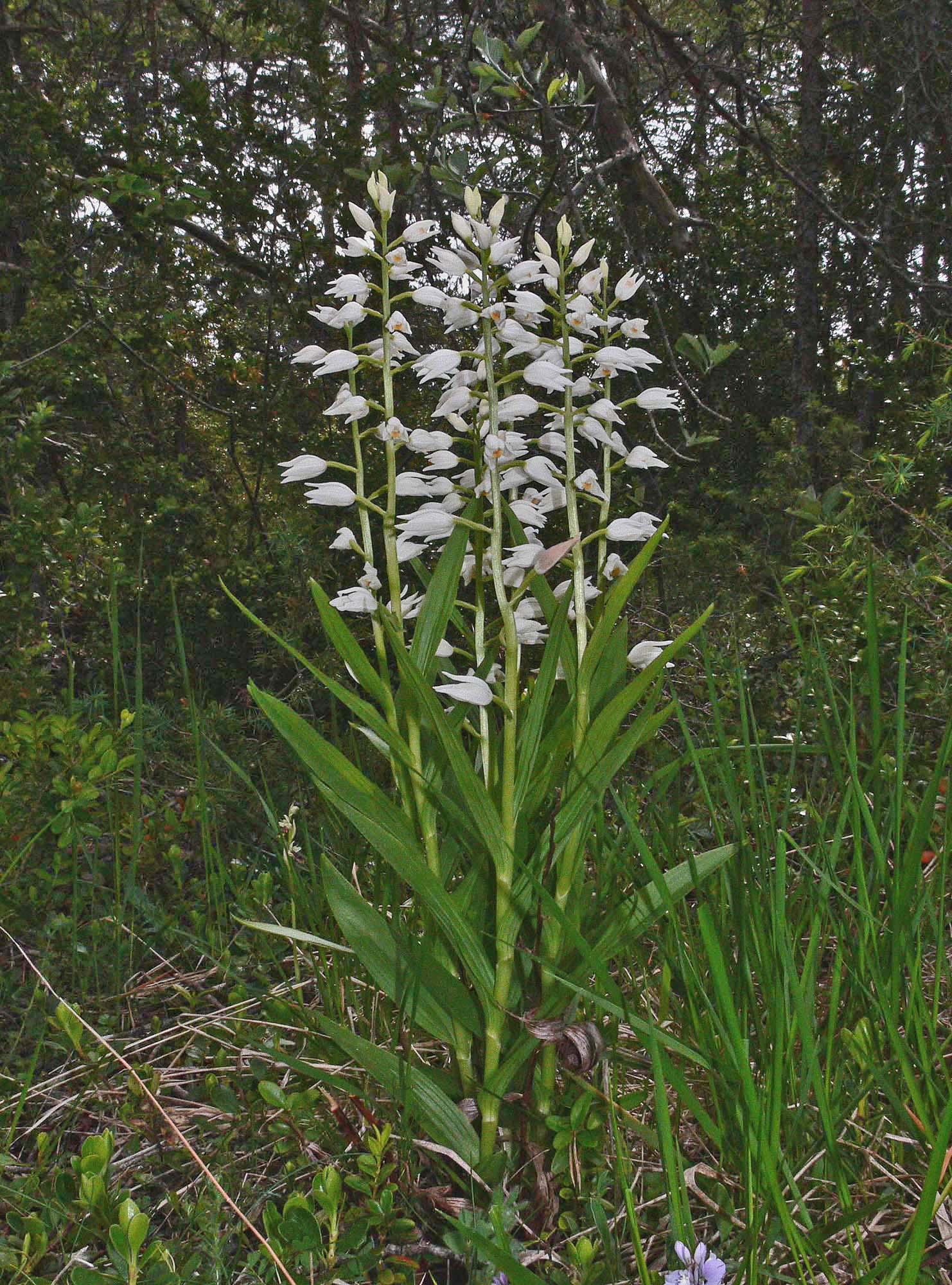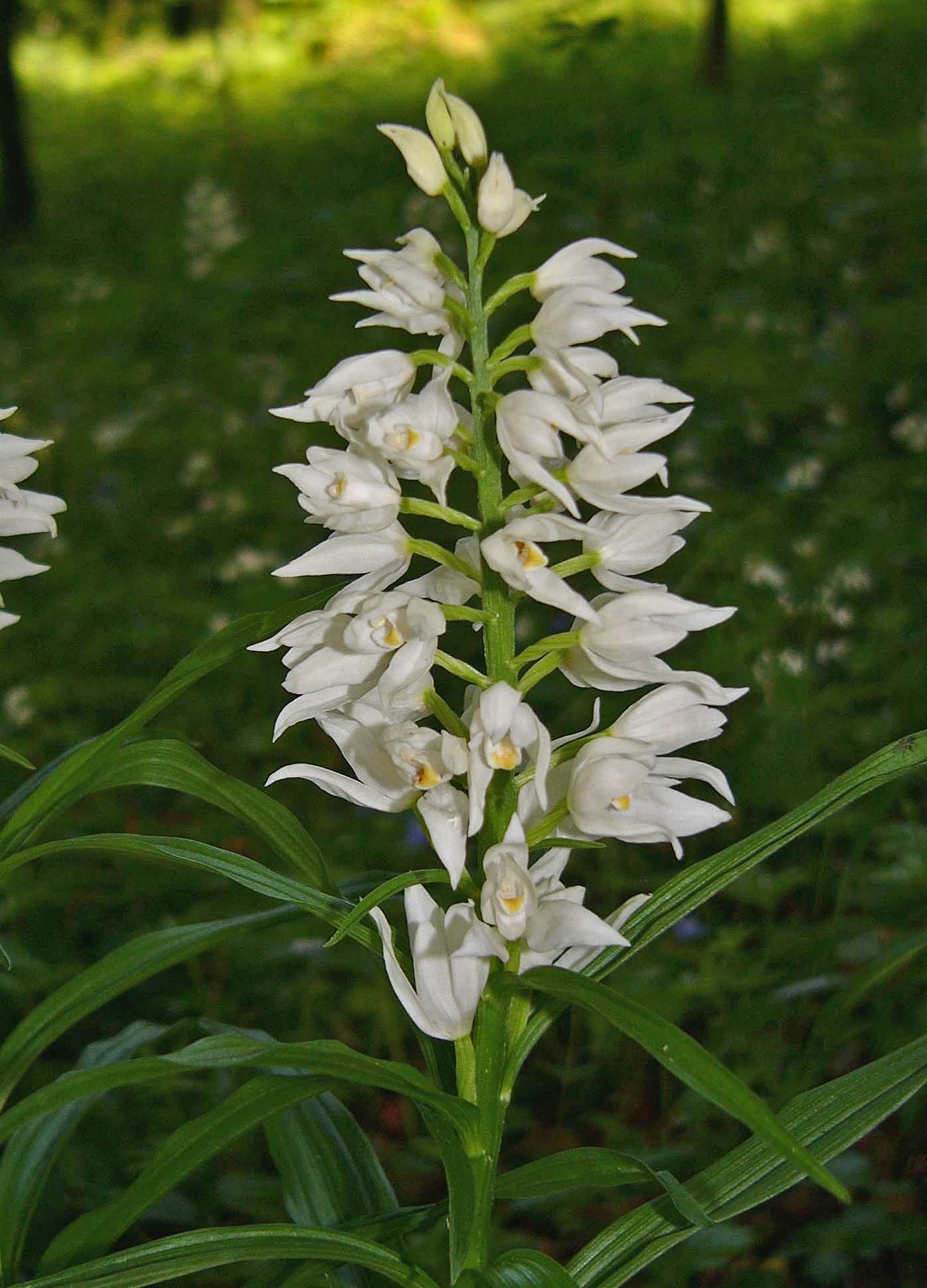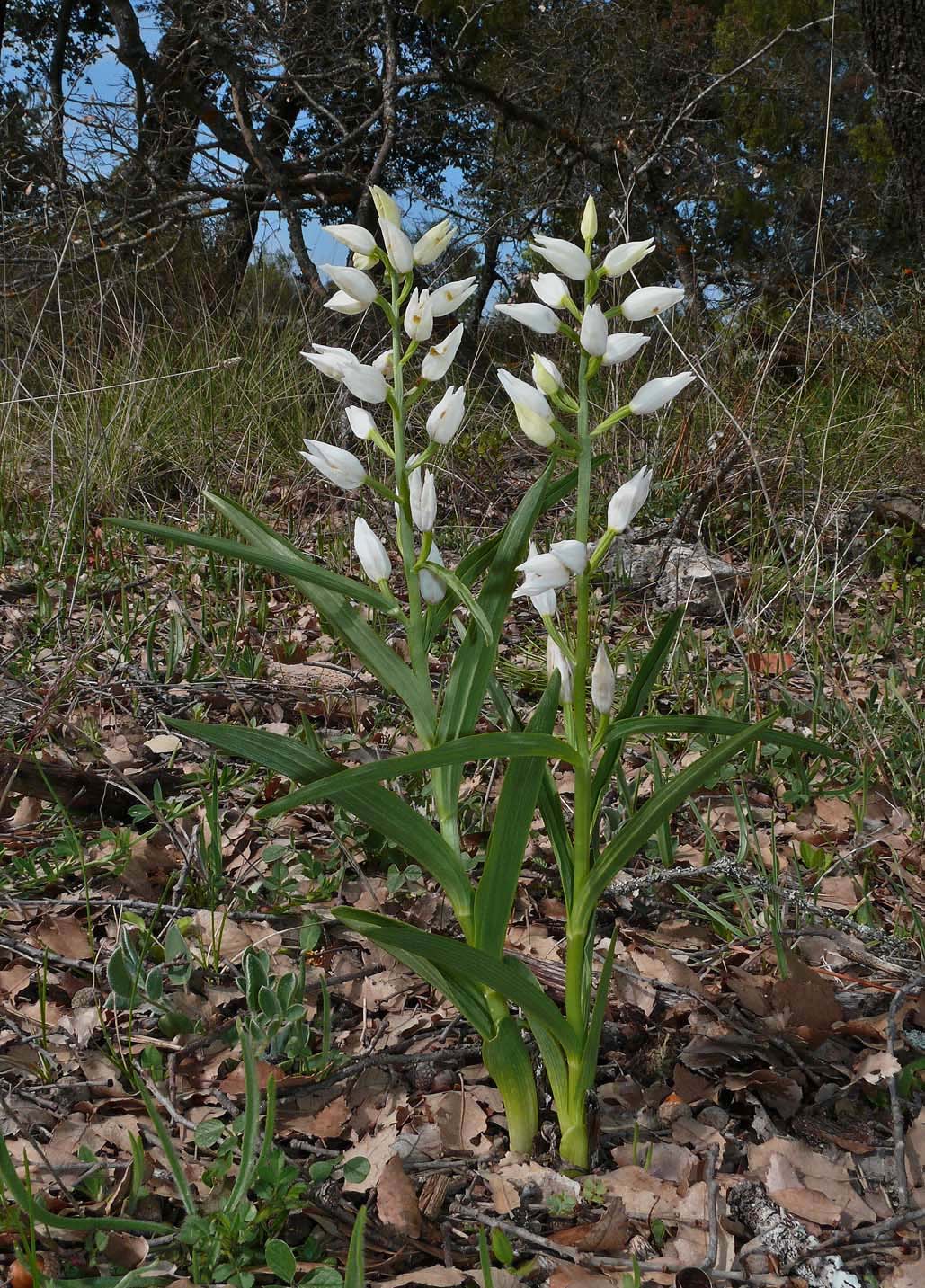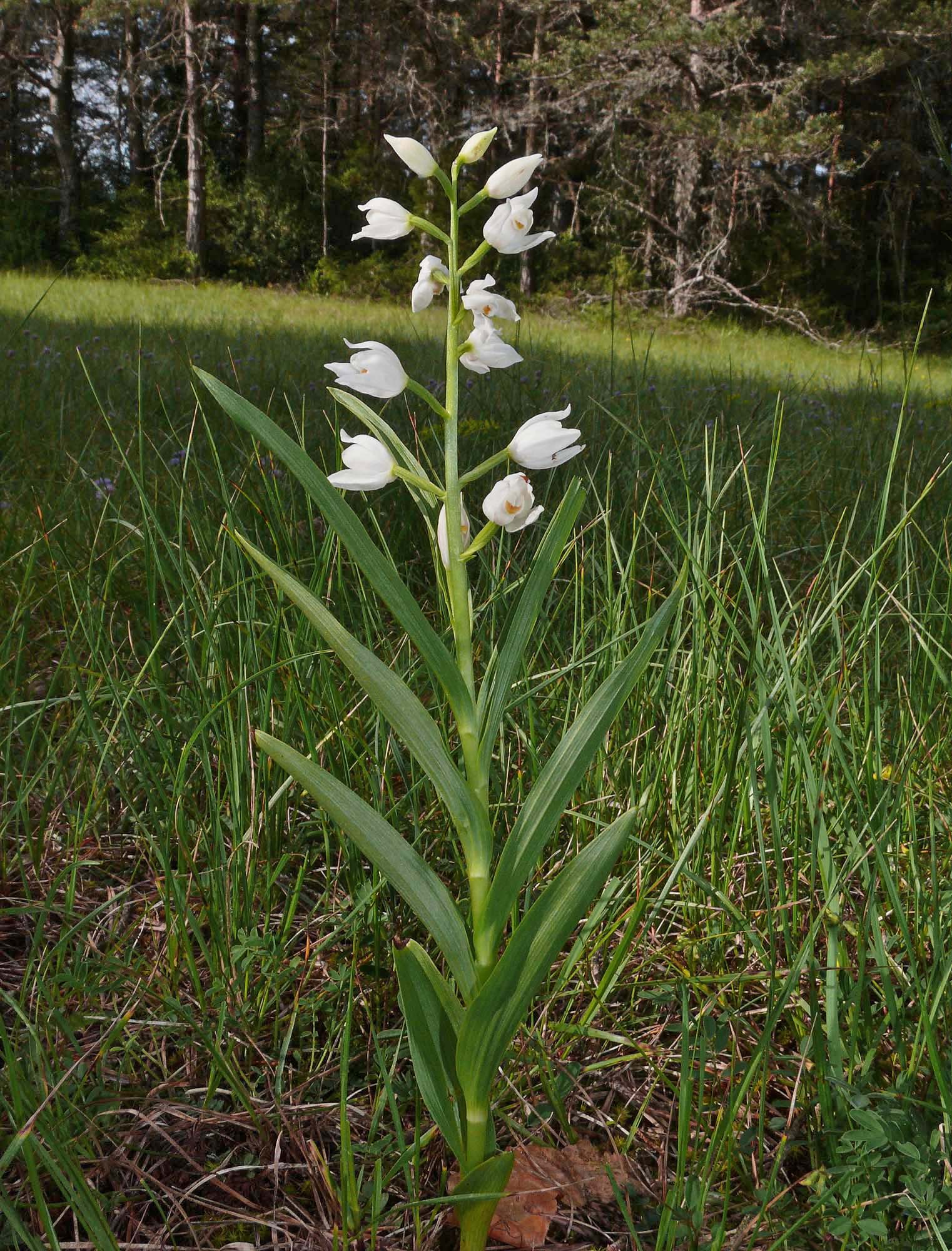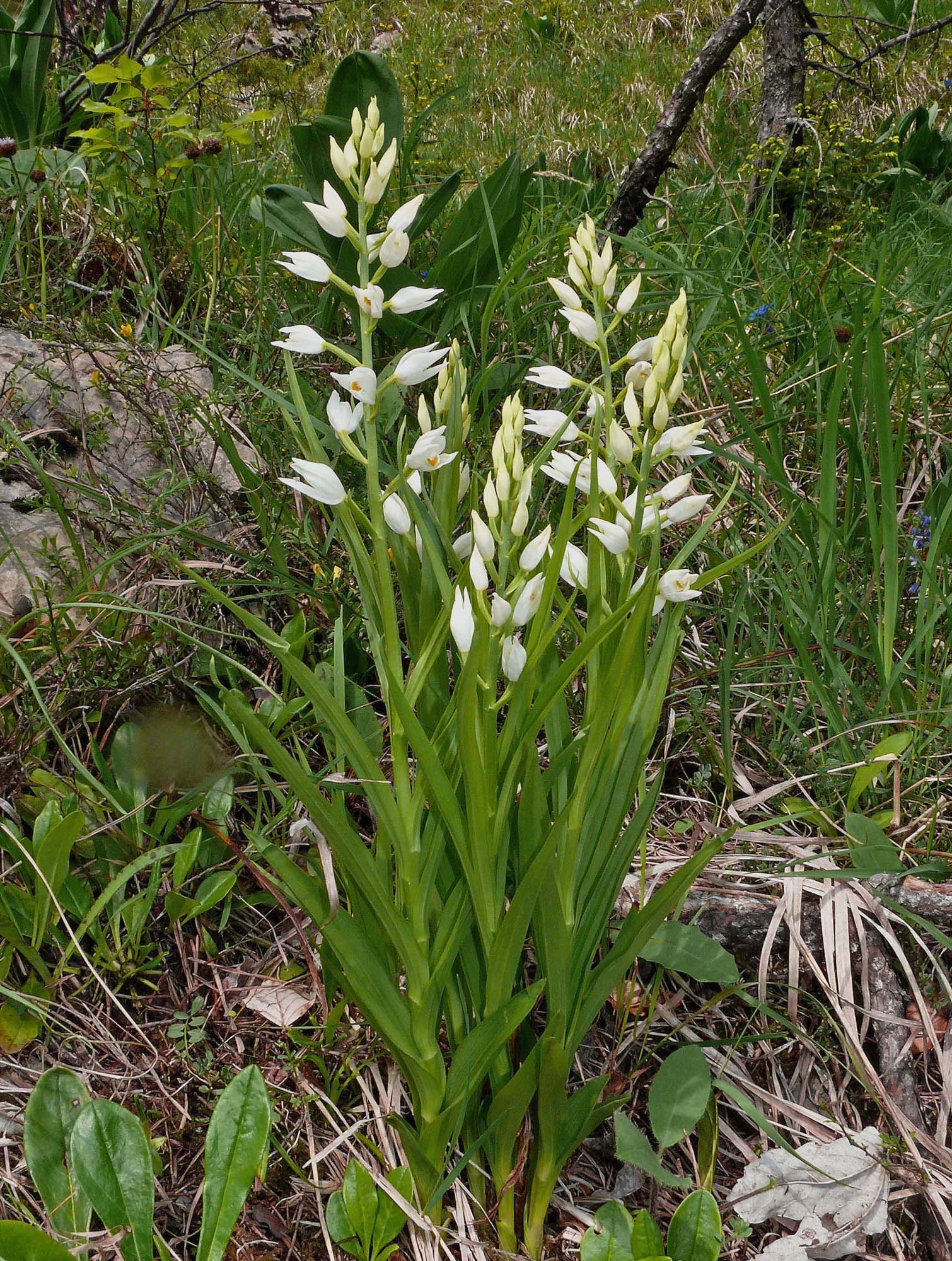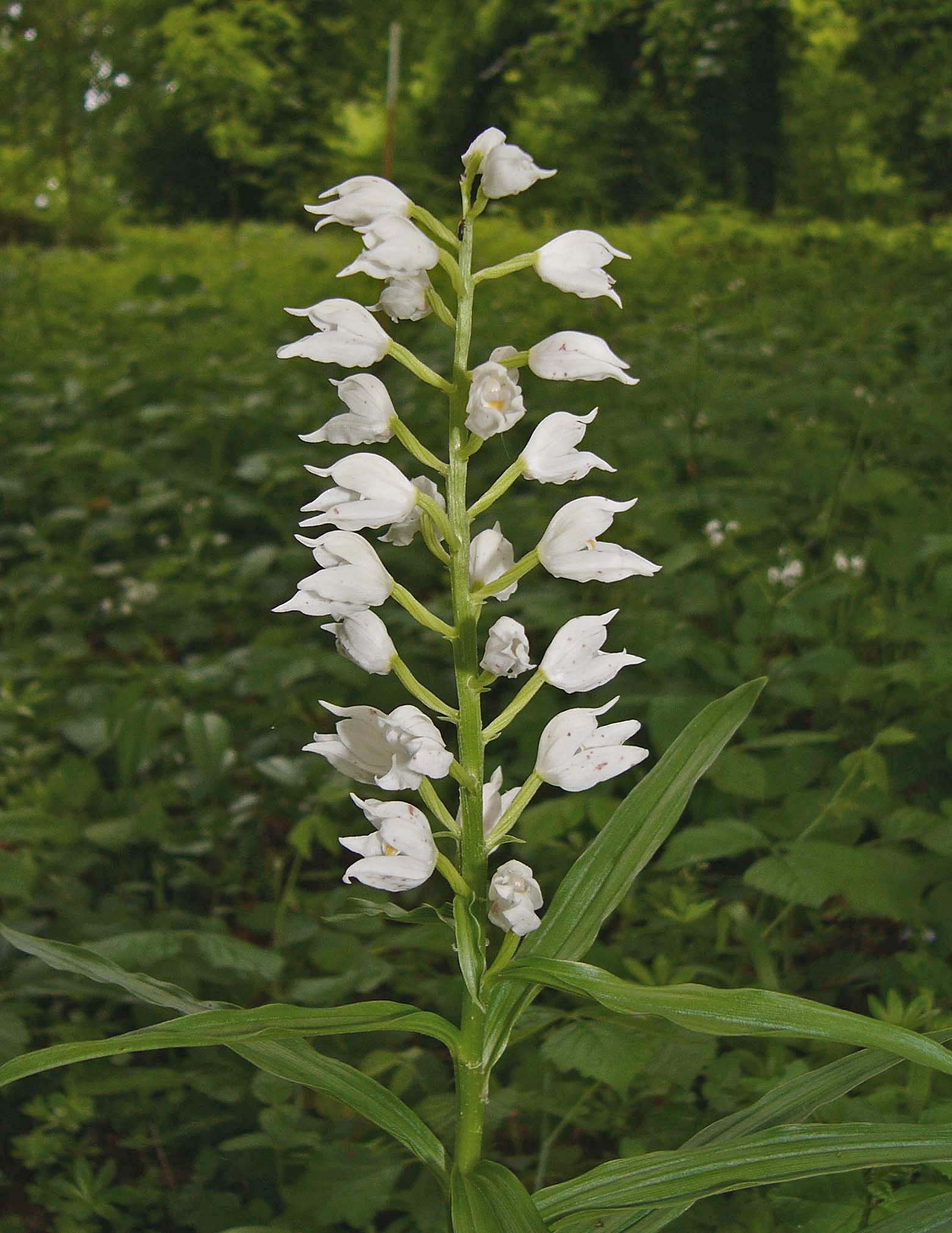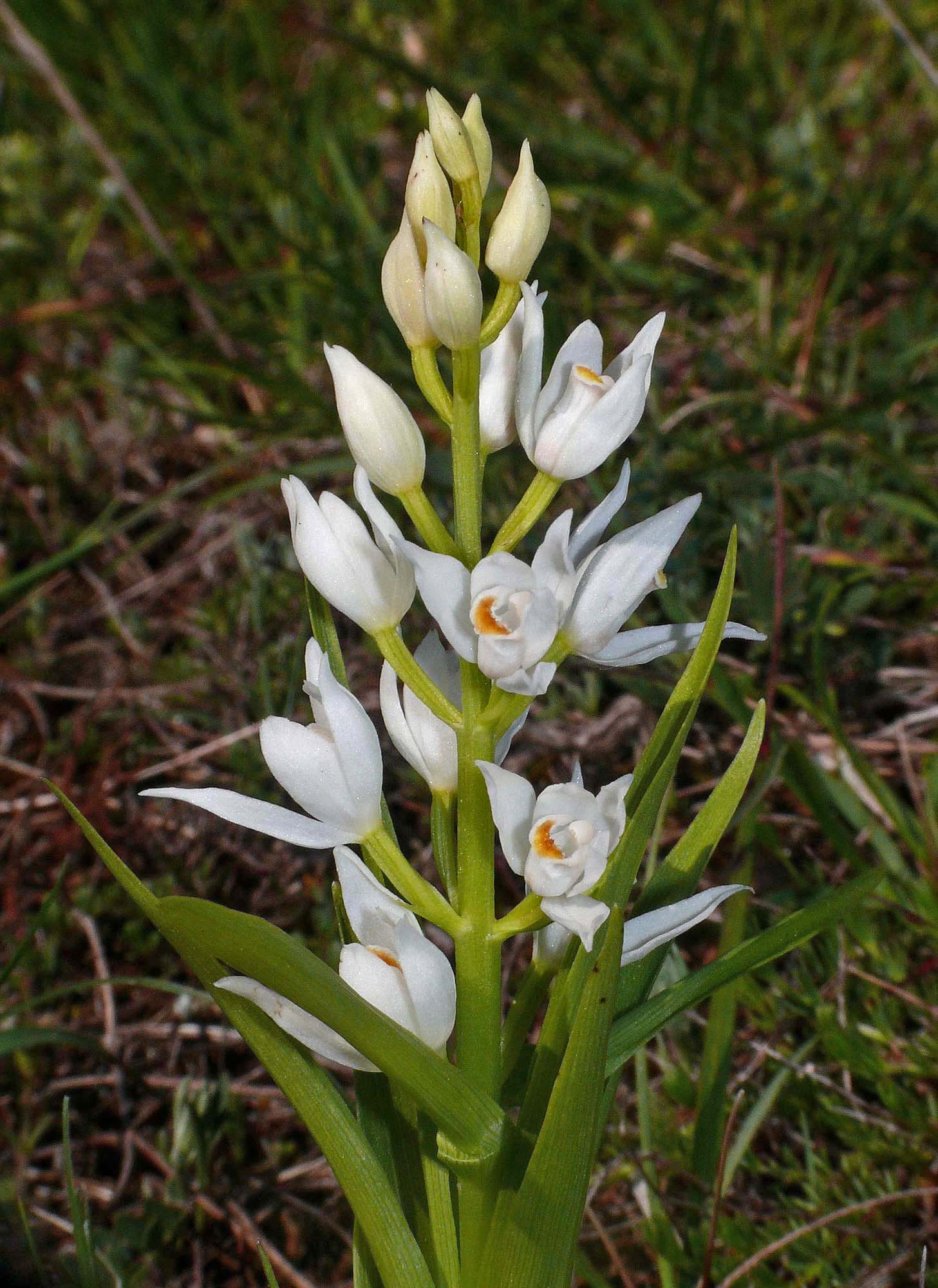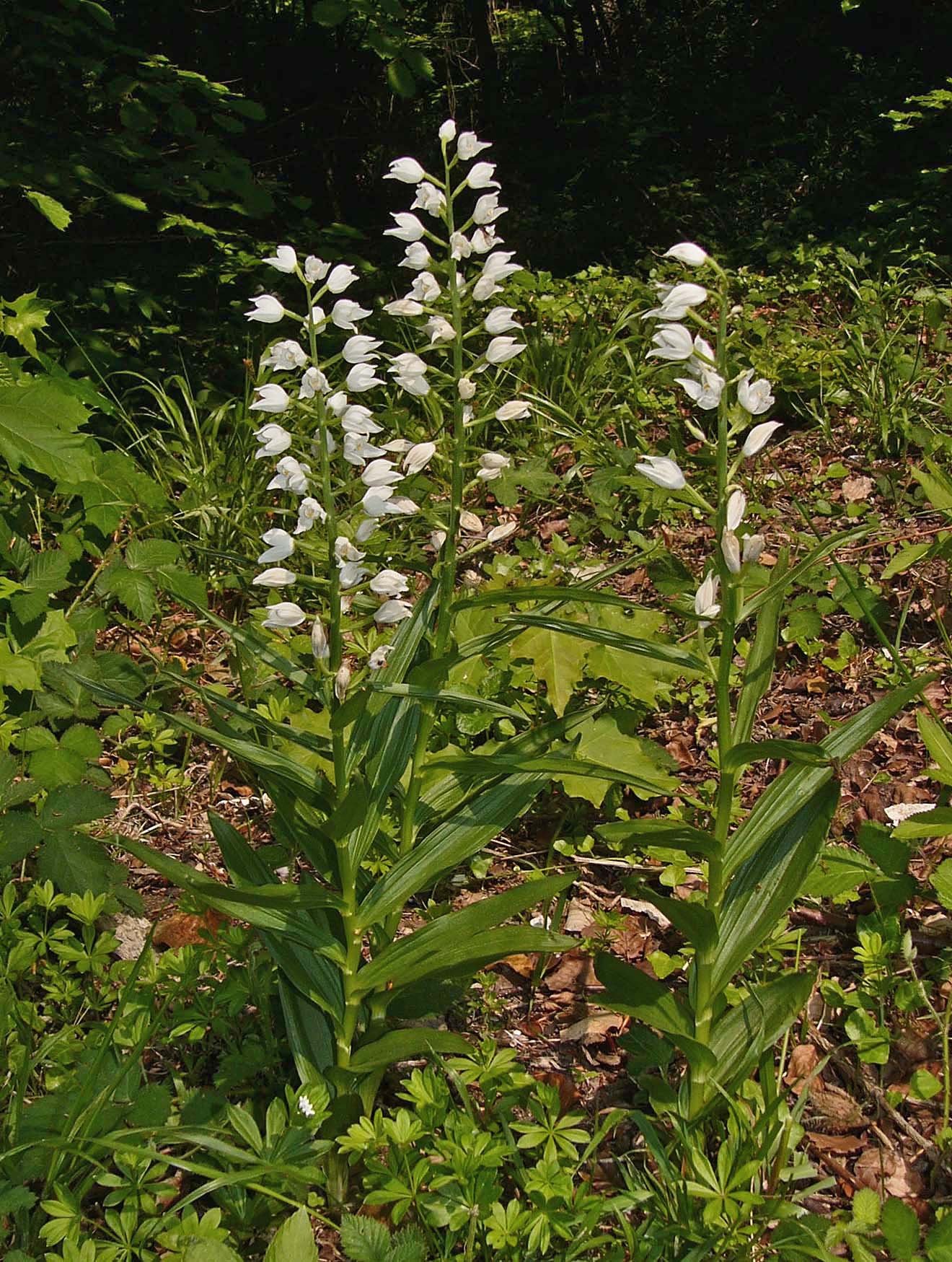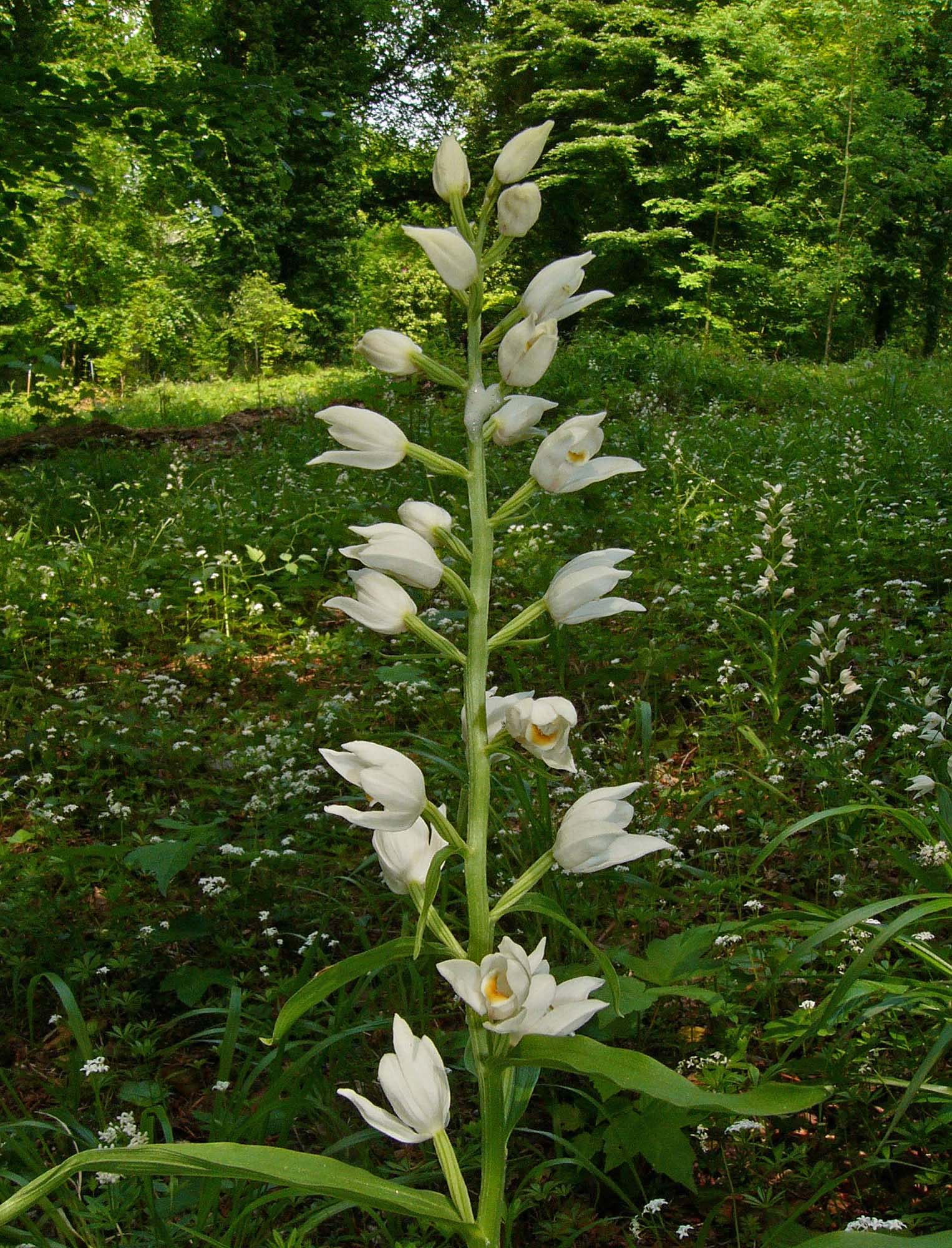C. longifolia. was first described by Fritsch from Sweden in 1753 and its name refers to the lanceolate leaves which are also the source of its common name, the Sword Leaved Helleborine.
This is one of the most familiar of Spring orchids and can be found virtually throughout Europe and into Asia as far as the Himalayas. Although it prefers a position in the mid shade of cool, open woodlands, it seems to show little reluctance in colonizing open grassland and road verges in full sun. It can often be abundant and despite favouring alkaline substrates, its acceptance of decalcified soils often results in it being the dominant species and in many cases the only orchid species over large areas.
C. longifolia cannot be easily confused with any other orchid except perhaps its close cousin C. damasonium with which it frequently associates. The common name of this latter species is the White Helleborine and although the flowers themselves are not dissimilar, differentiation between the two is easily achieved by comparing the leaf size and formation. In the latter species the leaves are shorter, broader and spaced less frequently up the stem. Additional distinguishing characteristics lie within the flowers themselves with those of C. damasonium being generally larger, less numerous and often not as pure white as those of C. longifolia.
C. longifolia comes into flower earlier than its close relative and in its favoured locations may be found in bloom as early as late March, although April is more usual. There is a brief overlap of flowering time with C. damasonium in May but the former species will be well past its best by this date.
